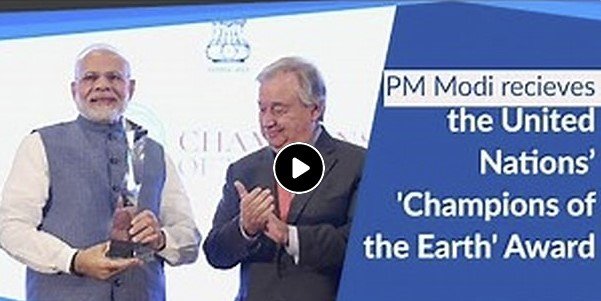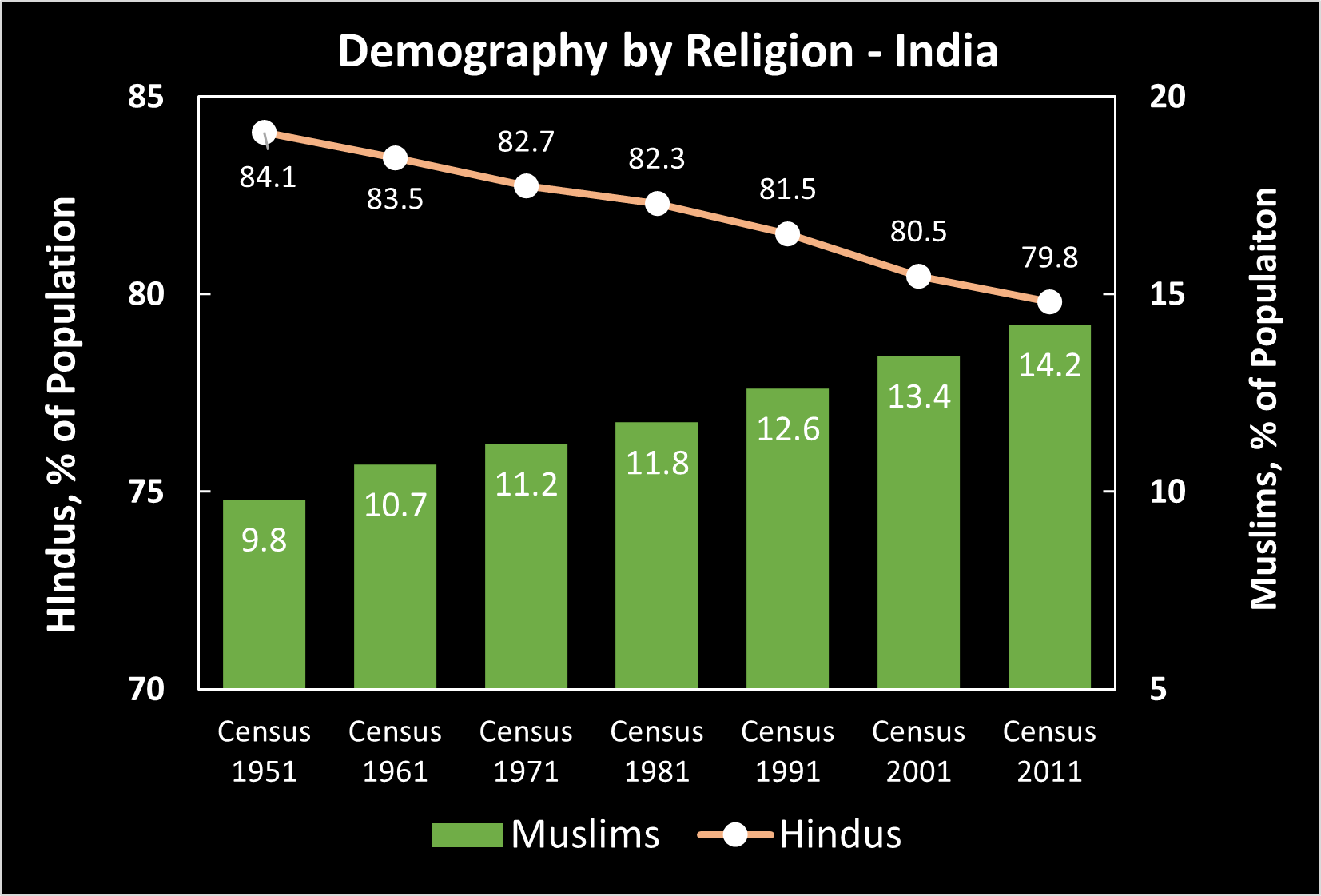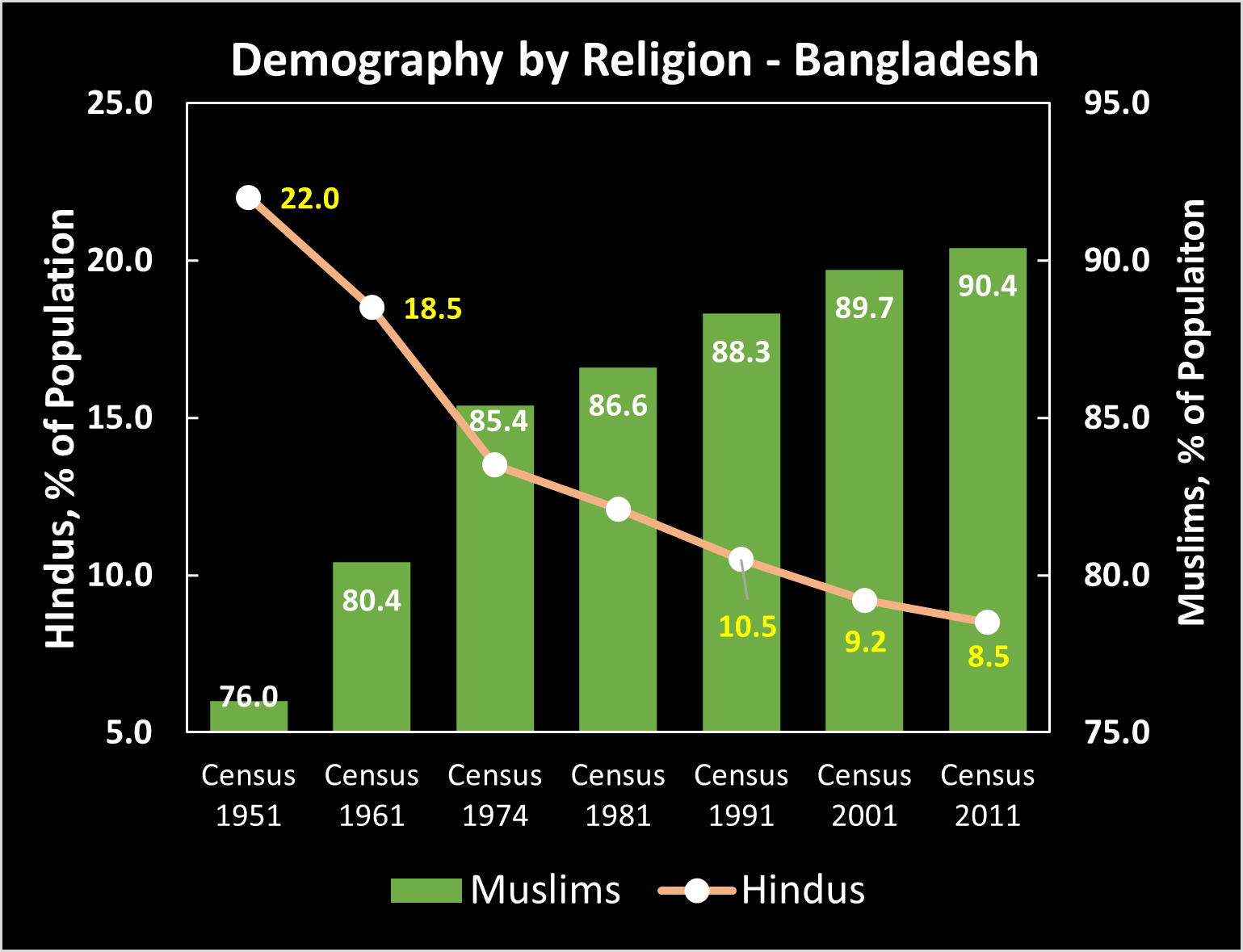This article counters the malicious attempt by a Western academic institution to malign India’s democracy. The article uses publically available data to show that (a) India’s democracy is healthy and functioning as it should, (b) India’s current political leaders garner far more respect on the world stage than many of the Western leaders, (c) India’s treatment of her minorities is far superior to that of its neighbors, as well as of many Western countries, (d) the often-used ‘academic freedom’ claim by Western academia to defend its right to spread racial hatred is a convenient fig leaf that is brought out only when it suits their agenda.
Background
Western academia has a long track record of developing and propagating adverse narrative on India and Hindu society, their social structure, value system, civilizational history, how they conduct internal affairs, and much more. This perverse tendency can be traced to the self-assigned superiority complex of the European colonizers and nurtured in large part by Western academia. Unfortunately, these hateful narratives on India, Hindus, and Hinduism have sustained to this day. A recent incident involving Ryerson University in Toronto, Canada, amply demonstrates this syndrome.
On December 9, 2021, the above-mentioned academic institution and the Toronto Public Library joined hands with Christophe Jaffrelot, a self-proclaimed expert on South East Asia, and Sanjay Ruparelia, an in-house academic at Ryerson, in organizing an event titled “Modi’s India: How Hindu Nationalism Has Eroded the World’s Largest Democracy.”[1]
We have seen this movie many times: A bevy of Western academic institutions using their platforms to spread a malicious narrative about India’s democracy while hiding behind the façade of “academic freedom.” Such sanctimonious pontifications from Western institutions about India and Hindus are nothing new. They are part of an ongoing enterprise to promote a hateful and denigrating narrative against Hindu society.
Hindu Canadians, like Hindus elsewhere, represent a peaceful and progressive community, living in harmony with the society at large and making outsized contributions to all facets of Canadian life. However, mischievous events like these create and nurture an atmosphere of hatred against them, representing an incipient risk to their cultural, material, and physical well-being.
This article provides verifiable data that undercuts this flawed and malicious perspective being pushed against India and Hindus in general.
Indian Democracy- Where’s the Erosion?
In recent years, it has become fashionable in the West to decry India’s democracy and, especially, its current Prime Minister. However, numbers tell a very different story about India’s democracy: [2]
- India is undoubtedly the world’s largest democracy – by a considerable margin. To wit, there are 912 million registered voters in India – roughly 30 times the total population of Canada!
- In the most recent general election in 2019, the voter turnout was 67% – roughly 10 points higher than the voter turnout in the 2021 Canadian federal elections.
- The Bhartiya Janata Party (BJP), currently in power, received 37% of the popular vote – the highest vote share captured by any Indian political party since 1989.
- The current ruling party garnered 303 seats out of the total 545 seats in the lower house of Parliament. Accounting for the coalition support, the ruling party enjoys a whopping majority with 345 seats or 63% of the total seats.
- Since the 2019 general elections, BJP has both won and lost many crucial elections at both the provincial and local levels, attesting to the fairness of the election process.
- The current prime minister, Mr. Narendra Modi, won his seat by 64% vote share, while his nearest opponent received only 18%.
It is also worth noting that India’s democracy operates in a neighborhood consisting of totalitarian regimes – many supported by oppressive theocratic political structures. With China, an oppressive regime, on its northern border, and a total paucity of functioning democracies from India’s western border to the Mediterranean Sea – with the exception of Israel – Indian democracy should be seen as a beacon of hope in an otherwise volatile neighborhood, and not picked on for some imagined and unsubstantiated transgressions.
Global Standing of Mr. Modi

In spite of the Western academia’s efforts to portray Mr. Modi as some kind of ‘prophet of doom’, the world at large continues to see him as a visionary leader. By some accounts, his popularity globally stands at 80% – far above that of any other world leader, including Vladimir Putin, Angela Merkel, and Boris Johnson. In 2018, Mr. Modi was recognized, jointly with Mr. Macron of France, with the United Nation’s highest environmental award, the ‘Champion of the Earth’. [3]
This stands in sharp relief to the reception accorded to Canada’s own Prime Minister at the European Parliament 2022. [4] Here is what the German representative, Christine Anderson, had to say to the PM: “Mr. Trudeau, you are a disgrace to any democracy. Please, spare us your presence.” The reception from the member from Croatia, Mislav Kolakusic, was no less biting when he told Mr. Trudeau that his regime was a ‘dictatorship of the worst kind.’ [5]
Treatment of Religious Minorities in India

Another popular canard is that India discriminates against its minorities, especially Muslims. Once again, numbers and facts tell a different story.
The Pew Research Center, a Washington, DC-based, non-partisan think tank, conducted a detailed survey of religions across India in 2019-2020. Based on nearly 30,000 face-to-face interviews conducted in 17 languages, their finding was published in a report titled “Religion in India: Tolerance and Segregation.” [6] Key findings of the Pew report can be summarized as follows:
- Indians of all religious backgrounds overwhelmingly say they are free to practice their faiths.
- Indians see religious tolerance as central to who they are as a nation.
- Across the major religious groups, most people say it is very important to respect all religions to be “truly Indian.”
- Indians are united in the view that respecting other religions is an important part of being a member of their religious community. In fact, according to this report, “82% of the Hindus say that respecting other religions is very important to what it means to be Hindu.”

Further, the census data over the last 70 years since India’s independence from colonial rule shows that the Muslim population has been rising steadily, from 9.8% in 1951 to more than 14% in 2011. Over the same period, the percentage mix of the Hindu population has steadily declined from 84.1% in 1951 to 79.8% in 2011.[7]
On the other hand, the treatment of minorities in the neighboring Islamic states is abysmal. The demographic data in the graph below from the neighboring Islamic state Bangladesh along the eastern border shows a steady and alarming decline in the Hindu population. [8]

Pakistan, along India’s northwestern border, is a very difficult place for non-Muslim minorities. It is a country where religious discrimination is the official state policy, as articulated by its former Prime Minister, Khawaja Nazimuddin: “I do not agree that religion is a private affair of the individual nor do I agree that in an Islamic state, every citizen has identical rights, no matter what his caste, creed or faith be.” [9]
The Hindu population in Pakistan has been hovering in the 1.5 – 2% range since 1951. However, the kind of hellish existence they are living can be gleaned from the fact more than a thousand underaged girls are abducted every year, converted to Islam, and forcibly married off to much older men. According to a recent article titled Pakistan: Christian, Hindu Girls Become Target of Sunni Muslim Clerics [10],“No single day passes without abduction of Hindu girls.”
In the case of Afghanistan, the less said, the better. It is estimated that the Hindu population of Afghanistan in the 1970s was around half a million. By the end of 2021, there were no Hindus left in that country.
We would like to pause here and ask where is the reporting and coverage in Western academia on these countries.
History of Minority Treatment in the West
The Western world’s record regarding the treatment of its minorities is nothing to be proud of. Canada’s own history of racism should give anyone a cause for somber reflection. From the infamous Komagata Maru incident of 1914 to the treatment of Canada’s natives and the race-based immigration policy for a large part of the 20th century, there are plenty of reasons why Canadian institutions should be looking inward at their value system and not look for frivolous reasons to take cheap shots at other societies.
Even closer to home, the record of Canadian academia is nothing to cheer about. This excerpt from an October 2021 article[11] should put things in perspective:
“The entrenched racism in Canadian institutions runs extremely deep. The issue is that most Canadian universities don’t want to hold people accountable – whether that be the founders, staff members, or students – that have contributed to the history of racism and enslavement. Instead, Canadian universities prefer to push it aside and pretend these issues do not exist, all while putting forward grand statements encouraging diversity in their communities.”
The same article also mentions that Ryerson University is changing its name in the hope of distancing itself from its bigoted founder, Egerton Ryerson. Given this institution’s readiness to sponsor an event like “Modi’s India,” we wonder if the name change is just an attempt to cover up its racist past.
Academic Freedom: A Convenient Fig Leaf
In the academic world, it is rather fashionable to wave the flag of “academic freedom” to peddle narratives that may be offensive to certain segments of society. They are not fooling anyone with these arguments.
Firstly, there is no such thing as an absolute right in a civilized society. One is allowed to exercise one’s right only to the extent that it does not cause harm to the rights of others. An event like “Modi’s India” cannot be considered just another garden variety exercise of academic freedom. It has to be called out for what it was – a malicious attempt to propagate Indophobia and Hinduphobia in Canadian society, resulting in great harm to the rights of Hindu Canadians to live in peace and harmony.
Secondly, academic institutions seem to exercise this ‘academic freedom’ argument only when it suits their agenda. A recent case involving the Toronto District School Board clearly shows the hypocrisy of this argument. Nadia Murad, a Yazidi woman and a Nobel Laureate – no less, was prevented from speaking about the horrors of her being captured and sexually enslaved by Islamic State terrorists because it “would foster Islamophobia,” as proclaimed by the Toronto District School Board[12]. There was not even a feeble attempt by the school board to use the venerated academic freedom argument!
Conclusion
Western academia has a long history of fomenting and promoting a Hinduphobic narrative, with origins that trace back to the eighteenth century when British colonial rule had started to put its roots down in India. With the passing of the colonial era, one would hope that academia would show credible intellectual leadership in using correct facts to provide objective opinions instead of peddling unsubstantiated claims to foment unrest and division. The Ryerson University incident shows much progress remains to be made, and Western academia appears still stuck in old colonial ways.
Citations
- https://press.princeton.edu/events/modis-india-hindu-nationalism-and-the-rise-of-ethnic-democracy
- https://en.wikipedia.org/wiki/2019_Indian_general_election
- https://economictimes.indiatimes.com/news/et-explains/what-is-champions-of-the-earth-award-and-why-has-narendra-modi-won-it/articleshow/66052143.cms?from=mdr
- ‘Mr. Trudeau, you are a disgrace to any democracy, spare us your presence’, ‘dictatorship’: How Canada PM faced humiliation in EU Parliament (opindia.com)
- ibid
- https://www.pewresearch.org/religion/2021/06/29/religion-in-india-tolerance-and-segregation/
- https://en.wikipedia.org/wiki/Religion_in_India#:~:text=Census%20statistics%20%20%20%20Religious%20group%20,%20%201.72%25%20%204%20more%20rows
- https://en.wikipedia.org/wiki/Demographics_of_Bangladesh
- Qasmi, Ali Usman (2015). The Ahmadis and the Politics of Religious Exclusion in Pakistan. Anthem Press. p. 149. ISBN 9781783084258
- https://wwrn.org/articles/47357/
- https://spheresofinfluence.ca/the-entrenched-racism-in-canadian-universities/
- https://nypost.com/2021/11/27/toronto-school-cancels-isis-survivor-event-with-nadia-murad/







